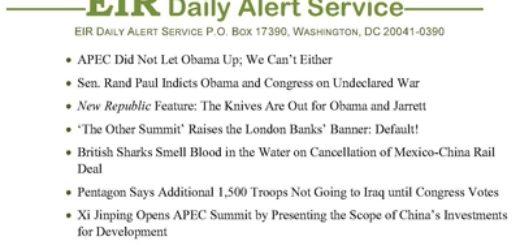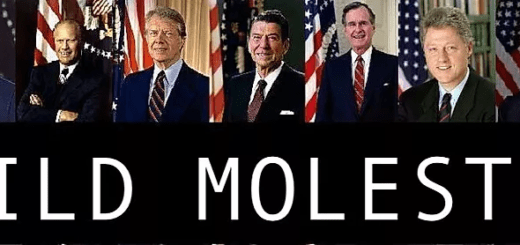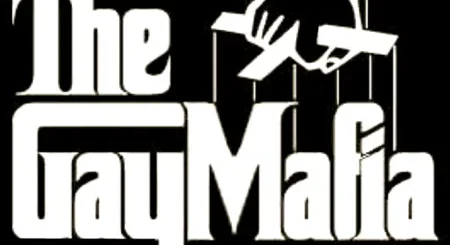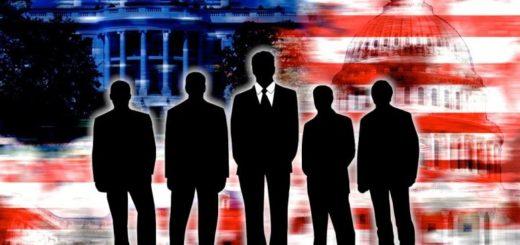EIR Daily Alert Service
|
MONDAY, MARCH 13, 2017 Volume 4, Number 50 EIR Daily Alert Service P.O. Box 17390, Washington, DC 20041-0390
EDITORIALU.S. Must Play Its Part in the Belt and Road SymphonyMarch 12 (EIRNS)—The Chinese government has launched a global organizing drive to ensure that the upcoming Belt and Road Forum for International Cooperation (BRF), to be held in Beijing on May 14-15, consolidates a “broad, international consensus on the Belt and Road Initiative,” in the words of State Councilor Yang Jiechi, the top-level Chinese official in charge of preparations for the Forum. He noted that “the global economy is yet to emerge from the profound impact of the international financial crisis.” “The Belt and Road Initiative was proposed by China. Yet it’s not going to be China’s solo show,” Yang stated. “A better analogy would be that of a symphony performed by an orchestra composed of all participating countries.” China has repeatedly made it clear that the Belt and Road Initiative is open to all nations in the world, emphatically including the United States. Yang Jiechi was the Chinese official who was sent to the U.S. for discussions with the incoming Trump administration earlier this year. “The New Paradigm is becoming the dominant, defining dynamic on the planet,” Schiller Institute founder Helga Zepp-LaRouche stated today. “And given the fact that we are less than 100 days away from the May Belt and Road Forum, I think we should use that time to really make sure that we get the U.S. to join, but also European nations to join, because that is the establishment of a higher level of reason which could really solve all problems.” “That is why the whole campaign against Trump exists, Zepp-LaRouche continued. “Because the last 25-26 years, when the City of London and Wall Street thought they could build a unipolar world, that is now out the window. That paradigm has gone under already, with the Brexit, the ‘No’ in the Italian referendum, with the Trump victory. And therefore the point is now to consolidate that, and make sure that the people who are trying to use every means to stop that change, are not successful.” We have to proceed quickly, she said, because the entire trans-Atlantic financial system is a powder keg, for which the only solution is the reinstatement of FDR’s Glass-Steagall law, as part of LaRouche’s Four Laws. However, if the U.S. joins the Belt and Road symphony, America, with its terrible infrastructure deficit and economic collapse, can be reconstructed at a higher technological platform, with the help of China, Japan and other nations. “But $8 trillion in infrastructure investment cannot be mobilized with the present bankrupt financial system. But it can very well be implemented if you create a national bank, if the Chinese can put their U.S. treasuries into that infrastructure bank, and if you have coordinated productive investment after implementing Glass-Steagall, and LaRouche’s other three laws. THE NEW GLOBAL ECONOMIC ORDERChina’s New Commerce Minister Upbeat on U.S. Trade TalksMarch 12 (EIRNS)—Speaking to reporters at his press conference yesterday at the National People’s Congress, Commerce Minister Zhong Shan expressed confidence that the U.S. and China would overcome any difficulties in the field of trade. “China and the U.S. are the largest economies in the world,” he said. “And the economic relationship will have a direct impact on the world economy. Our combined populations comprise 23% of the world population and our combined economies represent 40% of the world economy,” Zhong said. “While many people note the great dependence China has on the United States, they must also realize how the U.S. is also dependent on China. And U.S. exports to China are growing at a greater rate than Chinese exports to the U.S.” Zhong referred to President Xi’s call to President Trump where Xi had said that cooperation is the only path for the two countries, with which President Trump expressed agreement. Replying to a question on the Belt and Road Initiative, Zhong Shan said that it “has exceeded expectations.” “Two-way trade with the BRI countries in 2016 was $3 trillion,” he said. “Two-way investment increased and outbound investment [to BRI countries] in 2016 was $14.5 billion.” “We have created 56 industrial zones in 20 countries to the tune of $18.5 billion and created 180,000 jobs in these countries.” Zhong noted that the Ministry of Commerce would sponsor parallel meetings at the May Belt and Road Forum to promote greater business cooperation with companies in the Belt and Road countries. China Evaluating $50 Billion for Philippines InfrastructureMarch 11 (EIRNS)—The Bank of China’s managing director of Philippine operations Michael dela Cruz told ABS-CBN News on March 9 that the bank was evaluating $50 billion of investments in 19 infrastructure projects requested by the Duterte government. These include rails, roads, power plants, and bridges, dela Cruz said. “President Rodrigo Duterte said he’s looking to invest about [$200 billion] in infrastructure in the next five years. This value—the Chinese construction companies, equipment manufacturers, suppliers of building materials—are excited to participate in,” he said. The bank is planning to double its workforce, currently below 100, over the next two to three years to help evaluate the many projects in the pipeline, he added. During Duterte’s visit to China last year, the Bank of China signed a memorandum of understanding with several conglomerates with a pledge of about $3 billion for various projects. “The Philippines has so much room to grow as far as Chinese investments are concerned. Philippine investments in China are bigger than Chinese investments here. Look at ASEAN neighbors Vietnam, Malaysia—there’s huge presence of Chinese investors there,” said dela Cruz. Of course, this is because the Philippine has been under the thumb of Washington, demanding confrontation with China—until now. On March 8, a Chinese delegation led by Commerce Minister Zhong Shan met with Philippine Cabinet officials led by Finance Secretary Carlos Dominguez III. They agreed to begin China’s investment in Philippine infrastructure with projects which could be completed within three years, targetting two major water projects. They also discussed other large scale projects submitted to China during Dominguez’s visit to China in January. In addition to a pump irrigation project and a major dam project, the Commerce officials discussed extension of China’s support for drug rehabilitation facilities proposed by the Department of Health. A 10,000-bed facility is already in operation in the capital with Chinese support. U.S. POLITICAL AND ECONOMICSpicer Confirms Trump’s Commitment To Restoring Glass-SteagallMarch 10 (EIRNS)—At the White House press briefing March 9, Press Secretary Sean Spicer said that President Donald Trump is ready to work with Democrats and Republicans to reinstate the Glass-Steagall Act, separating commercial and investment banking. Spicer spoke in response to questions by John Gizzi of NewsMax; the full interchange is below. Preceding the briefing, were two notable events. The day before, six new co-sponsors were registered on the bill to re-instate Glass Steagall, H.R.790 “Return to Prudent Banking Act of 2017,” bringing the total to 37. All Democrats: Indiana, Peter Visclosky; Massachusetts, Niki Tsongas; Oregon, Earl Blumenauer, Kurt Schrader; Pennsylvania, Robert Brady. Thursday morning, President Trump hosted CEOs of community banks at the White House for a “listening session,” on their problems. Among those attending were, Camden Fine, president of the Independent Community Bankers of America, as well as Rob Nichols, the head of the American Bankers Association. Also present were Treasury Secretary Steven Mnuchin, an opponent of Glass-Steagall restoration, and likewise, Gary Cohn, Director of the National Economic Council. Spicer opened his press briefing by referring to the meeting, citing only that small, community banks should be free of Dodd-Frank restrictions. “Gizzi: All right, thank you. Going back to the meeting and to your opening statement about the banks, in the last campaign, candidate Trump campaigned hard on restoring the Glass-Steagall Act, which would put a barrier between commercial and major investment banks. It, of course, was repealed in 1999—the repeal signed by President Clinton. Senator Sanders campaigned on this as well, noted that it was in the Republican platform in Cleveland, and said in December he’d be happy to work with the Trump Administration on restoring Glass-Steagall. Is there any plans for the President to meet with Senator Sanders? And is repeal of Glass-Steagall on his agenda? [sic—repeal of Gramm-Leach-Bliley] “Spicer: There’s no current schedule to meet with him. I’m sure that, as he has done with several other members of Congress from both sides of the aisle, that at some point, that will be scheduled. But we don’t have anything on the books for now. “But look, he’s shown—and I think today was another—or yesterday was another example, today another example of his willingness to reach across the aisle, his willingness to look into both chambers and not just business, but labor unions and other industries, where we can find common ground. And I think if Senator Sanders and others want to work with the White House on areas of ways that we can improve the financial industry, we’re going to do that. “Gizzi: Are you still committed to restoring Glass-Steagall? “Spicer: Yes.” An article on Investment World Blog claimed that “Wall Street stocks plunged” after hearing about the news. It wrote, “Trump recently pledged to ‘do a big number’ on the Wall Street reform law known as Dodd-Frank, and now spokesman Spicer has confirmed Trump is also committed to honoring his pre-election pledge to bring back Glass-Steagall.” American Society of Civil Engineers Gives U.S. a ‘D+’ in InfrastructureMarch 10 (EIRNS)—Although the Trump Administration promises to spend $1 trillion to improve U.S. infrastructure, the American Society of Civil Engineers (ASCE), in its quadrennial report issued today, says it will take almost $4.6 trillion over the next eight years to even bring American infrastructure systems up to an even acceptable standard. Considering that new infrastructure platforms must also be built, such as a national high-speed rail network, this brings into focus the overall estimate of $8 trillion in needed investments over a decade, made in January by China Investment Corp. President Deng Xuedong—who proposed that his fund invest its Treasury holdings in the U.S. project. The ASCE has given the United States a grade of “D+” on its 2017 Infrastructure Report Card—the same grade the U.S. received in 2013, the last ASCE four-year report issued. This report starkly demonstrates that the U.S. must move into a new infrastructure paradigm: join China’s Belt and Road Initiative world infrastructure program; consider Japan’s offers to build high-speed rail lines in America, and most importantly, adopt the Four Laws of American statesman Lyndon LaRouche to finance and build modern infrastructure, with science driver input, on the principle of Alexander Hamilton’s National Bank. In a realistic move on the need for financing, beyond the tired, ripoff “public-private partnerships” flotsam, ASCE itself focuses on a $0.25/gallon increase in the Federal gas tax as the infrastructure funding mechanism, as well as indexing the gas tax to inflation. Political leaders at all levels say that while private investors might put money into select projects in urban areas from which they expect a return, they would avoid investments in rural areas, and would rather build new, limited infrastructure than replace entire deteriorated systems, Ashley Halsey III reported in today’s Washington Post. Connecticut Gov. Dan Malloy told the paper, “I think the Federal government has to play a larger role.” In the past 14 years, most of the infrastructure categories ASCE has evaluated received a “D,” and hardly any have moved more than a fraction of a grade. Here are some of the Post’s summary of categories and grades, with the report’s commentary on the areas: “Bridges: (C+) Four in ten of the U.S.’s 614,387 bridges are more than 50 years old and near the end of their designed life span. Nearly 59,000 are structurally deficient. “Drinking water: (D). There are 240,000 water main breaks each year, wasting 2 trillion gallons of water. “Electricity: (D+) Most electrical transmission lines were built in the 1950s and 1960s, with a 50-year life expectancy, and they are running at maximum capacity everywhere except Alaska and Hawaii. “Railroads: (B) The private freight railroads that own most U.S. rail track invested $27.1 billion to upgrade their systems. [Think Warren Buffett’s transporting his ethanol—ed.] “Transit systems: (D−) Though they carried 10.5 billion trips in 2015, chronic underfunding and aging infrastructure have led to a $90 billion repair bill.” STRATEGIC WAR DANGERRussia Ready for Dialogue with U.S. on Intermediate-Range Nuclear Forces TreatyMarch 11 (EIRNS)—Russian Foreign Ministry spokeswoman Maria Zakharova said yesterday that Russia is prepared to conduct a dialogue with the United States on compliance with the Intermediate-Range Nuclear Forces, or INF Treaty for lifting the existing concerns and clarifying likely controversies, reported TASS. The U.S. accuses Russia of violating the treaty, she noted, but at the same time, “the United States firmly refuses to discuss our own well-founded claims related with the INF treaty’s compliance by the U.S. itself.” She was referring, primarily, to the Mk41 vertical launch system installed at the NATO missile defense site in Romania and which will also be installed in Poland. The Mk41 is the same system installed on U.S. Navy ships and is used to launch Tomahawk cruise missiles, as well as surface-to-air missiles. In Russian eyes, the installation of the Mk41, therefore, is a possible violation of the treaty. There are also other issues under the treaty that the Russians want to discuss with the U.S. “Once again we suggest giving up groundless rhetoric and public accusations lacking specific examples and starting a discussion on the merits with the aim of lifting the existing concerns and clearing up likely controversies,” Zakharova said. Ukrainian Neo-Nazis Will Blockade Russian Coal Beginning April 2March 11 (EIRNS)—The Ukrainian neo-Nazis have set a date of April 2 for blocking railway lines between Ukraine and Russia, reports TASS. “We give the government time till April 2 to revise its policy concerning trade with the aggressor country. Our lookout points that have been set up at all railway cross points with Russia will begin an active phase of blockade from April 2,” Anatoly Vinogrodsky, a member of the so-called Donbass battalion which coordinates actions of the radicals, said. “First of all, we will stop all coal coming from Russia,” he said. There’s already not enough coal in Ukraine, because of the blockade of the two breakaway republics, so the neo-Nazis are, therefore, proposing to worsen the coal shortages in Ukraine for their neo-Nazi purposes of fully taking over the government. COLLAPSING WESTERN FINANCIAL SYSTEMUN: Worst Humanitarian Crisis Since World War IIMarch 11 (EIRNS)—A dose of reality, and another case of Obama’s role as one of the world’s greatest murderers, was released Friday at the UN, as UN humanitarian chief Stephen O’Brien told the Security Council that the world faces the largest humanitarian crisis since the United Nations was founded in 1945. More than 20 million people in four countries are facing starvation and famine, O’Brien said, and that “without collective and coordinated global efforts, people will simply starve to death” and “many more will suffer and die from disease.” He called for immediate support for Yemen, South Sudan, Somalia and northeast Nigeria “to avert a catastrophe.” O’Brien, the Under Secretary General for Humanitarian Affairs and Emergency Relief Coordinator, put the price tag for this at $4.4 billion by July. UN and food organizations define famine as when more than 30% of children under age 5 suffer from acute malnutrition and mortality rates are two or more deaths per 10,000 people every day, among other criteria, reports AP. O’Brien said the largest humanitarian crisis is in Yemen where two-thirds of the population—18.8 million people—need aid and more than 7 million people are hungry and don’t know where their next meal will come from. “That is 3 million people more than in January,” he said. He said that Secretary-General António Guterres will chair a pledging conference for Yemen on April 25 in Geneva. O’Brien notes that these famines are “man-made,” but foolishly blames the victim nations as primarily responsible: “Parties to the conflict are parties to the famine, as are those not intervening to make the violence stop.” The actual cause has a name: Obama and the British Empire. Developing Railway Grid in Western Africa Is UrgentMarch 10 (EIRNS)—Whereas construction of railroads in eastern Africa is making big progress, respective projects in Sub-Saharan central and in Western Africa are lagging behind. According to a 2016 report in the Mail & Guardian Africa, Togo is seeking to strengthen bilateral relations with China with the hope of becoming the latter’s staging point in West Africa. Similar to the other countries, China has been active in Togo’s transport infrastructure. Cameroon is also reported to offer itself as gateway to West and Central Africa. It had Chinese cooperation already in its transport infrastructure, notably the new deep water Kribi port built by Chinese companies. In other parts of West Africa, development of deep water ports connected with the Belt and Road Initiative (BRI) have been canvassed. These include Libreville, Gabon; Tema, Ghana; and Dakar, Senegal. In Nigeria, there is interest in infrastructure such as the coastal railway project from Calabar to Lagos and the Nigerian railway modernization project from Lagos to Kano. In 2014, the Nigerian government and China Civil Engineering Construction signed an agreement for the $12 billion coastal railway project to link all 10 coastal cities in Nigeria. Unfortunately, this did not materialize at the time, and a new deal was signed in 2016. Another project, the rail line from Abuja to Ibadan, has recently been okayed by Nigeria with Chinese financial support. Should West African countries’ engagement in the Belt and Road Initiative increase, it is important for these countries to find joint ways to increase intra-regional transport connectivity as is emerging in East Africa. There are numerous projects in the drawers, which neither the IMF nor World Bank nor the Western private banks wanted to finance. This year is expected to bring progress also for projects, not least because of numerous African countries being members of the Asian Infrastructure Investment Bank (AIIB). SCIENCE AND INFRASTRUCTUREAmerican and Russian Scientists Advance Plans for a Joint Mission to VenusMarch 11 (EIRNS)—Russian and American scientists will meet next week to continue work to plan a joint mission to Venus, NASA’s Jet Propulsion Laboratory reported last evening. The Joint Science Definition Team is identifying shared science objectives for the Russian-initiated Venera-D mission to Earth’s sister planet. Recently, JPL states, a report was delivered to both NASA and Russia’s Space Research Institute from the scientists to assess science objectives. Under discussion is a challenging mission, to include an orbiter, designed to operate for up to three years, and a lander, designed to withstand the extreme environment on Venus (900°F surface temperature) and operate for a few hours. There is also under consideration, a solar-powered airship that would cruise in the planet’s upper atmosphere for up to three months. As the planet is shrouded in clouds, early Earth-based observations left many mysteries. Many scientists, including Krafft Ehricke, believed Venus might harbor life. While that possibility now would seem extremely unlikely, the evolution of Venus, and its atmosphere and geology, would add another piece to the understanding of the history of the Solar System. The Soviet Union placed a focus on Venus in its planetary program. Although the first few early missions were not successful, in November 1965 the Venera-2 craft successfully carried out a flyby. The Soviet Union landed the Venera-7 craft on Venus in August of 1970. Missions continued into the mid 1980s. In 2005, the Russian government approved the Venera-D mission, and now it has become a joint mission with the U.S. NASA flew the high-resolution Magellan radar mission to Venus in 1990, which revealed the surface features for the first time. OTHERBritish Intelligence Claims Russian Cyber Threat to British ElectionsMarch 12 (EIRNS)—Spies at Britain’s Government Communications Headquarters (GCHQ) have called for an emergency summit with U.K. political parties, according to today’s London Sunday Times, after warning the parties that they are at the risk of Russian cyber-attacks that would disrupt the next general election. Top GCHQ agents, including Christopher Steele, played the leading role in the fabricated hacking and related charges leveled against Russia and Donald Trump, in an effort to topple his government. The only evidence cited by Ciaran Martin, chief executive of GCHQ’s brand new National Cyber Security Centre, for bringing the myth of Russian hackers home to Britain, was the coverage of the U.S. election which charged that Russian hackers helped Donald Trump win the election, and the accusations that Russian hackers had infiltrated the computer network of the German parliament in 2015. Martin claimed the danger went beyond elections: “Attacks against our democratic processes go beyond this and can include attacks on parliament, constituency offices, think tanks, and pressure groups and individuals’ email accounts.” |
|
|












